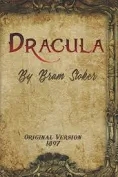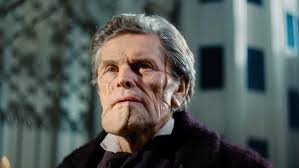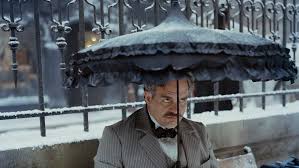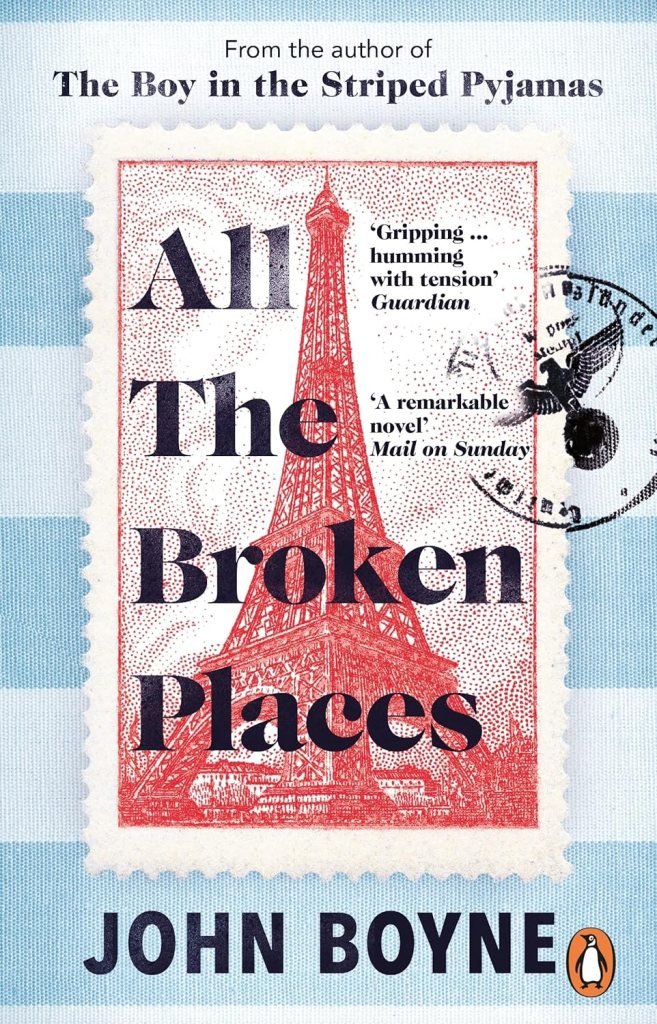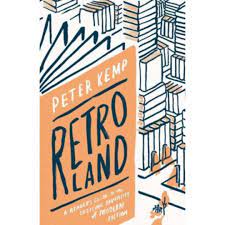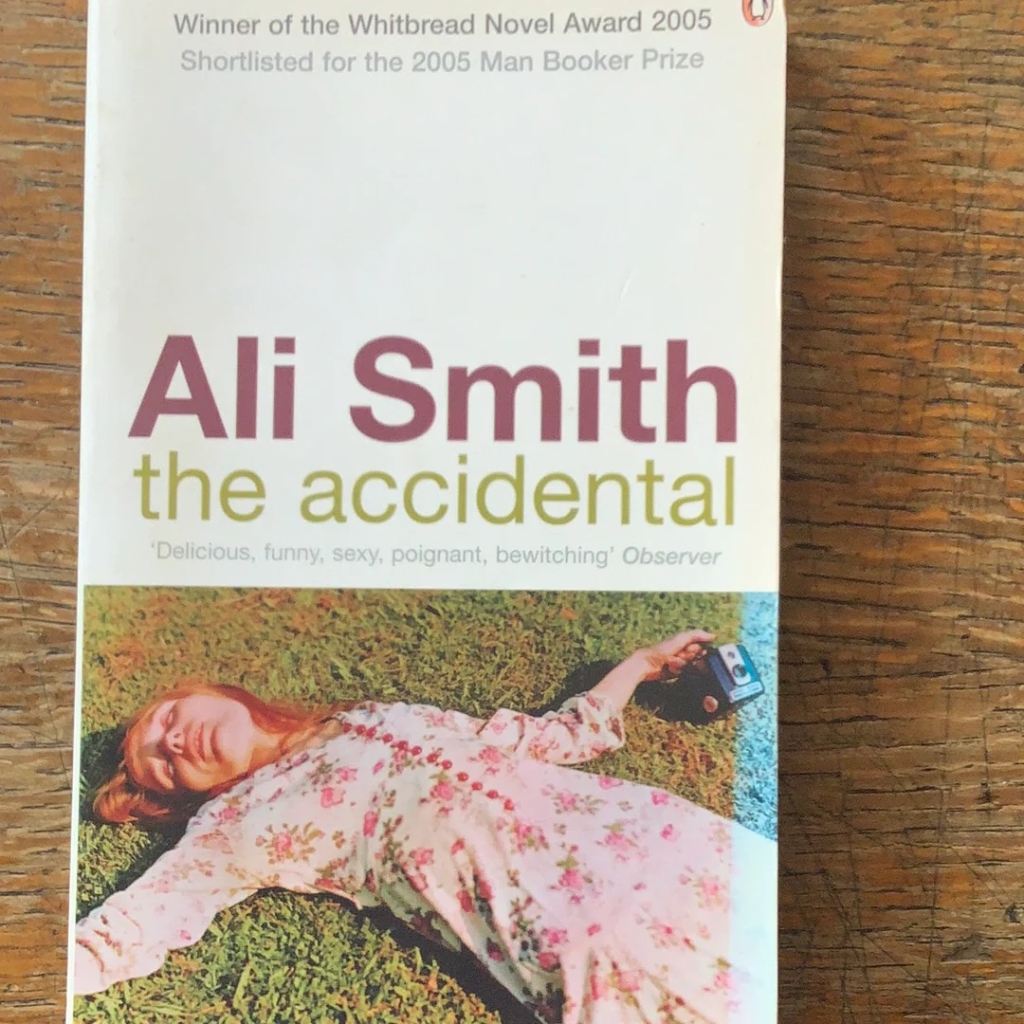I’ve been doing this now for more years than I care to remember. Sometime around the last day of the old year or the first day of the new year I put up a list of everything I have read over the preceding twelve months. There was a time when I would even single out the books I considered particularly good, though I have lately fallen out of that habit.
This is a practice that goes back decades. Way back in my teens I used to make a list of every book I read in a year. There was at least one year then when the total came to over 200. These days I can’t even manage a quarter of that. For the longest time I did better; around the time I started this practice (back in the dear dead days of Livejournal) I would average 70 to 80 books a year comfortably. Those totals were almost certainly connected to the fact that I was spending as much as four hours a day commuting, an ideal opportunity to get through multiple books a week. When I stopped working, and therefore stopped commuting, my reading time fell precipitately. Of course, around the same time was when I started writing books myself, and that, believe me, drains away the time you have to read for yourself. And over the last few years in particular other things, real life and real death, intervened also, and for several years it has been a struggle to read as many as 30 books in a year.
This year, unexpectedly, and for the first time in over five years, I actually managed to read a little over 40 books. Put like that, it doesn’t sound like much, but believe me it feels like a massive advance.
For a while I did try to write here on this blog about each new book as I finished it, so long as I wasn’t writing about it for review elsewhere. So what follows will mostly consist of links to other places. But I ran out of impetus on that around the end of October, so the links will disappear for the final pieces. For the record, I’ve been having building work on the house. It is still going on, though hopefully it will finish early in the new year, but it has meant that for much of the year there have been other people in the house, along with noise and disruption and the like, which has not always been conducive to either reading or writing. So whether the new year will prove even more productive in terms of reading is something I’ll have to wait until next December to find out.
Anyway, for the record, this is what I have read in 2023:
Shrines of Gaiety by Kate Atkinson: she has become one of my very favourite writers, and this is a wonderful novel that I wrote about here.
Love and Let Die by John Higgs: the first single by the Beatles, “Love Me Do”, and the first James Bond film, “Dr No”, were both released on the same day, Friday 5th October 1962. John Higgs tries to build an elaborate cultural history of Britain over the last 60 years on the back of this, though as I say here I found it less than convincing.
Deep Wheel Orcadia by Harry Josephine Giles: the winner of the Clarke Award, and a somewhat unexpected choice, which was precisely what attracted me to the book. I wrote about it here.
Rendezvous with Arthur C. Clarke edited by Paul March Russell and Andrew M. Butler: I was at the conference in Canterbury that gave rise to this collection of essays. There was a lot of interesting stuff discussed there, and I reviewed the book for BSFA Review 20, Spring 2023.
Love Chronicles of the Octopodes by Karen An-Hwei Lee: a science fiction novel written by a poet who, frankly seems far more invested in Emily Dickinson than she is in science fiction. So it is a curious book, but an interesting one, as I hope I conveyed in my review for Strange Horizons.
Hopeland by Ian McDonald: the first of the big novels of the year, which I reviewed for Interzone 295, September 2023.
The Romantic by William Boyd: Boyd is one of the handful of writers I’ve been following ever since I first discovered his work. His novels can be very different in subject and approach, but that is part of the interest. I wrote about this one here.
The Morbid Age by Richard Overy: anyone who has followed these posts over the years will know that I am fascinated with British social history, especially of the twentieth century. This is an excellent account of the interwar years, and though I haven’t written specifically about this book at any length, it did inspire this post and, rather more obliquely, this post.
The Singularities by John Banville: I discovered Banville’s work with his second or third novel, and have been addicted to his work ever since. I remember seeing him speak once when he said that all of his work was part of one greater story, and that impetus is becoming more explicit in his recent books, such as this one which I wrote about here.
All These Worlds by Niall Harrison: okay, it has been an excellent year for sf non-fiction, beginning with this great collection that I reviewed for Interzone Digital.
Helgoland by Carlo Rovelli: There is a passing reference to this book in the second of the two posts I linked to under The Morbid Age above, and that, alas, is the only place I wrote about this book. We have several books by Rovelli, but this is the first one I’ve got round to reading; it won’t be the last. It provides an historical and social context for the development of the idea of quantum physics in the early years of the last century, and that actually proves to be an excellent way of explaining the science.
Conquest by Nina Allan: it has been a tight contest, and there are still 2023 novels I’ve not yet got around to, but for me this is the novel of the year. I reviewed it for Interzone 295, September 2023.
Daisy Jones and the Six by Taylor Jenkins Reid: this is one of the few occasions when I watched and enjoyed a television series and was therefore tempted to read the source novel. The series was interesting because it dealt with a subject I find interesting, popular music in the 1970s. In the series the band was presented very much as Nicks/Buckingham era Fleetwood Mac (though my preference was always for the earlier Peter Green era), but there was much more general stuff about the music business that fascinated. The novel, as is usually the case, was not quite the same. It was a very easy book to read, it felt even more romantic than the TV series, and the structure and character of the band was different. But it was still pleasant, and right now I am feeling seriously tempted to go back and watch the series again.
The This by Adam Roberts: What! I didn’t write about this novel when I read it? How is that possible? I can only assume that my thoughts about the book were too inchoate to put down immediately, and then the opportunity passed. To be honest I went into it expecting something more along the lines of The Thing Itself, the subtle way that earlier novel played with the philosophical notions behind it. This was less subtle, and I didn’t find myself intellectually or emotionally drawn into the working out of ideas in the same way. There is something almost crude in the slam-bang presentation of the set-up, and by the end of the novel I found myself caring less and less how the thing worked out.
Airside by Christopher Priest: okay, I’m a sucker for Priest’s fiction, there have been books I’ve enjoyed less than others, but there’s none that I’ve found to be actively bad. That said, there has been over the last ten years or so an unexpected rush of books, and some of them have indeed felt more rushed than others. But this feels like something he’s been working towards for some time, the best of these late-period books. I wrote about it here.
Wish I Was Here by M. John Harrison: another of the stunningly good non-fiction books to appear this year. After a couple of false starts I managed to write about it here.
The Near Future in Twenty-First Century Fiction by David Sergeant: this is one of those peculiar academic texts that I seem to come across more and more these days, mainstream academic literary criticism dealing with a non-mainstream subject, with all the clumsiness that tends to imply. I came across the book in a TLS review, suggested that it might be a good subject for Foundation. I wrote the review back in the middle of the year, but I don’t think it has been published yet.
Critical Revolutionaries by Terry Eagleton: I am not always in sympathy with Eagleton, but I am very interested in the history of criticism, and this is an account of the five greats of mid-century British criticism: T.S. Eliot, I.A. Richards, William Empson, F.R. Leavis, and Raymond Williams, and as an introduction to their work it serves its purpose well. I wrote about it here.
Babel by R.F. Kuang: okay, this was the novel everyone was talking about, like Kuang was the second coming and this book single-handedly lifted fantasy to a new realm. And it’s about translation, and its about Oxford, so I gave it a try. And as I make clear here, I really didn’t like it.
Treacle Walker by Alan Garner: this was not quite the last thing Maureen wrote, but it was the last piece published in her lifetime, and it is a good way to go out on a high. It took me a long time to get the courage to read the book for myself, and when I did I found that I didn’t really have that much to add.
Skirrid Hill by Owen Sheers: I first encountered the Welsh writer, Owen Sheers, with his first novel, Resistance, and since then I’ve read a second novel by him and two of his plays. But he is primarily a poet, so I thought it was time to try some of his poetry. And this collection is fabulous, as I say here.
Slow Horses by Mick Herron: the first of his Slough House novels, which I’d been hearing about for some time. Then the television dramatisation came along, and the praise ramped up exponentially. Well I finally watched the first two series over Christmas, and they are excellent, largely because of how faithful they are to the novels, but I won’t be watching further series until I have first read the books. Anyway, this was my first encounter with Jackson Lamb and his cohorts, and I am hooked.
A Traveller in Time: The Critical Practice of Maureen Kincaid Speller edited by Nina Allan: I know, I’m prejudiced, but I do honestly think that (even against the stiff competition of Niall Harrison and M. John Harrison) this is the best work of sf non-fiction to appear this year. It is sharp, perceptive, engaging, frequently very funny (I have long envied Maureen’s ability to write serious criticism that is funny at the same time), and as I say in this brief mention, her voice rings loud and clear from every page.
Storyland by Amy Jeffs: one of the things I’ve been doing this year is starting to sort through our books. For all sorts of reasons a large number of our books and many of our shelves are inaccessible to me at the moment, but there are several random piles of books around the house, and to be honest in many cases I don’t know whether the books were mine or Maureen’s, whether they were bought or came in for review or acquired some other way. This was one of them, and as I say it was quite enchanting in its way.
The Big Book of Cyberpunk edited by Jared Shurin: and big is the operative word, an inordinately large part of my summer was taken up with reading the book in order to write this review for Locus.
Promise by Christi Nogle: a collection of short stories by a writer new to me, though I certainly wouldn’t be averse to reading her again. My review appeared in Interzone Digital.
Writing the Future: Essays on Crafting Science Fiction edited by Dan Coxon and Richard V. Hirst: I’m not sure that this collection of essays really knew what it was doing. There are some good pieces here and some that are very much not good, as if the contributors had no clear idea of what the collection was all about. Another book I reviewed for Interzone Digital.
Retromania by Simon Reynolds: another of those books that had been on Maureen’s shelves for ages though I had no idea why she would have any interest in the book. And indeed I was three quarters of the way through the book before I discovered one of her areas of interest, as I try to explain here.
Nervosities by John Madera: I’ve known John Madera for years without ever meeting him. Our first encounter began when he invited me to be part of what was then a group blog, Big Other, through it has since become an online magazine of experimental writing. This is his first collection of short fiction. It isn’t published until 2024, but I got an advance glimpse of the book, which I wrote about here.
Dead Lions by Mick Herron: and surely I am not the only one to think immediately of deadlines; these books are about many things, not least a metaphor for the dismal state of Britain, but among other things they are spy novels about writing spy novels. This is one where the television dramatisation differs from the original novel, particularly in the ending, and there are details all the way through that didn’t make it onto the screen, like the suggestion that one of the slow horses at Slough House is an informer for MI5, though all of these are part of the way Herron builds up the idea that the whole world is built on deception. This was the first of the books I read on my Danube cruise, and the place where my resolution to keep writing about books in this blog began to crumble. But at least I did write about it here.
Normal Rules Don’t Apply by Kate Atkinson: my second Atkinson book of the year, and her first collection of short stories in something like twenty years. The stories are all linked, though you don’t notice that for a long time, and most of them have an element of the fantastic. I wrote about it here.
The Lock-Up by John Banville: and my second Banville of the year. But this is one of his crime novels. I am fascinated by Banville’s turn to crime. There has often been crime in his fiction, but since they were written in the oblique, allusive manner of any of his other books they didn’t feel like crime fiction. When he did start to write out and out crime stories they appeared under the name Benjamin Black, although right from the start it was acknowledged that this was Banville. The subject matter was the sort of stuff that would appear in Banville’s novels, often the malign influence of the Catholic church on Irish politics and society in the 1950s, but the prose was different, precise, matter of fact, direct. In time, these crime novels, often featuring the pathologist Quirke, would become a major part of Banville’s output. And then what seemed like a new crime series, featuring the Protestant Inspector Strafford in Catholic Ireland, began to appear under Banville’s own name. But this wasn’t a new departure, Quirke was still there in the background, and this third in the series is labelled “A Strafford & Quirke Mystery”. This time an apparent suicide is revealed as a murder that involves antisemitism, the lingering after-effects of World War II, and of course the power of the church. And I find these books every bit as compelling as the more familiar Banville novel.
Disruptions by Steven Millhauser: another of my favourite writers. I just love the way he distorts the everyday in what seem like perfectly normal New England towns, often slipping into the fantastic in a way you barely notice. I wrote about him, along with Atkinson, here.
Masques of the Disappeared: 1971-2023 by Judith Clute: there is one of Judith’s etchings hanging in my front room, so positioned that it is the first thing you see when you enter the room. The actual picture was Maureen’s choice, but I was more than happy to go along with it. I love her artwork because I always find it disorienting and thought provoking; what is the reality captured in these pictures; and the figures within them, who often stare boldly out of the frame, what reality are they seeing? It seems to me criminal that we have had to wait so long for a book that gathers together her work, so this is welcome if belated. I’ve written a short review of the book for Interzone Digital, though I don’t think it has been published yet.
Red List: MI5 and British Intellectuals in the Twentieth Century by David Caute: this is, I think, an important book, but it is not a very good one. It is poorly written and ill-structured, chronology is haywire so it is often impossible to work out the sequence in which things happen, and Caute has a habit of dropping in names and events without explanation so the significance of events is not always clear. For example, one of the names that recurs throughout the book is Director of MI5, Roger Hollis, though he never once mentions the allegations (by Chapman Pincher and Peter Wright among others) that Hollis was himself a Soviet spy. What the book does is lay out in detail the unredacted details from files that MI5 kept on individuals, particularly individuals on the left. It is true that some of these individuals were indeed working for the Soviet Union, but most weren’t (and the most notorious spies, such as Anthony Blunt, barely even rate a mention here) It is clear that, even at the height of the Second World War, you were far more likely to earn an MI5 file if you were on the left than if you were an out and out Nazi. Throughout the period covered in this book, from the formation of MI5 in the First World War to the mid-60s, any involvement in a protest movement, particularly an anti-war movement, was seen as de facto work for a foreign power. A surprising amount of the content of the files is based on gossip, for instance Joan Littlewood’s Theatre Workshop was considered so unquestionably suspect that anyone whose name was simply mentioned in reviews of their early productions, or in newspaper reports of events connected to the Theatre Workshop automatically received an MI5 file.
Beyond the Burn Line by Paul McAuley: a book I reviewed for Interzone, though the review has not yet appeared.
Three Eight One by Aliya Whiteley: due to be published in 2024, but I received an advanced copy which I reviewed for Interzone, though as yet the review has not appeared.
Scoop by Evelyn Waugh: one of the things that happened during the cruise in October was that my fellow passengers kept insisting that I should get involved with U3A, the University of the Third Age. I’d never even heard of it before, but it appears to be a loose connection of local organisations devoted to various educational opportunities for retired people. Anyway, I did contact the local set-up and I’ve just started with them, taking on a course on philosophy, a current affairs discussion group, and two book groups (not sure if I’ll keep up with both). Only one book group has met so far, and the object of discussion was Scoop, which has been on my shelves forever, but I’ve not read it before. I was surprised how bad I found it: the humour is forced and over-emphatic, the language is horribly racist, and most of the characters were so over the top as to be unbelievable. There were contemporary comic writers who were much lighter on their feet, and many of Waugh’s contemporaries opposed the sort of racism expressed here. So I was very disappointed with this book (though the discussion in contrast was lively and interesting).
Firmament by Simon Clark: another of those books that has been hanging round on unregarded piles for some time. I think this is a book I once got for Maureen, she had started it but never finished. It is a popular science book on how weather works, which was really fascinating. Interesting to learn that when Admiral FitzRoy published the very first weather forecasts in The Times in 1861 he was actually breaking the law against witchcraft. Apparently any supposed prediction of the future was considered witchcraft because it was prophecy; that law was not repealed until the 1950s.
Felicie by Georges Simenon: since I had been reading the Maigret novels aloud to Maureen, I stopped reading them when she died. This was my tentative return, and it was good. I particularly like the interplay between Maigret and the quick-witted young woman, Felicie, who becomes his way into solving the crime.
The Culture: The Drawings by Iain Banks: I suppose some arrogant part of me had imagined that someone might think to ask me to review the book, but no one did, so I ended up buying it for myself. In the end I’m not sure it is of any interest except to the fanatics. The drawings are crude, blocky, lacking in detail, and since they were originally done in pencil they haven’t always reproduced as well as they might. The interest actually lies in the scribbled numbers that surround the drawings: Banks’s estimates of size, weaponry, and complement for each ship. Though I’m not sure the numbers always make sense.
The Death of Francis Bacon by Max Porter: somewhere we have a couple of books by Porter that Maureen liked but that I’ve not read. But this one looked interesting. It is really no more than a novelette at most, very short, very spare. It is a description of seven last (fictional) paintings by Bacon contemplated but not executed while he was dying in Spain. Memories, dreams, encounters with the sister nursing him, all flow together in a way that resembles the distortions of Bacon’s work. I’m not sure I understand it all (there are references, like some of the references within his actual paintings, that I just didn’t get), but I found myself engaged and enthused by it all. So now I need to find where those other Porter books have hidden themselves away.
And that’s it, I think. I am not far enough advanced with any of the four books I am currently reading to expect that any will be finished before the end of the day, the end of the year. So they will have to wait for the next one of these posts. Still, for me that’s a goodly number of books that hopefully bodes well for the future.
Other than reading, I’ve done a lot of writing this year. There’s at least a dozen reviews for different publications, plus one or two other pieces. Again that gives me a sense of getting back on the horse that threw me last year. Though this isn’t all plain sailing. Back in October I signed a contract for a book on Pavane by Keith Roberts. Now Pavane is a book I love, I’ve written about it before though not at such length, and I have a fairly clear idea of the things I want to cover in my book. Moreover, I have been wanting to write a book about Roberts since at least the 1990s, and this is the first time the opportunity has come my way. And yet, I just can’t get myself started. I’ve written half a dozen books now, but it feels as though I have forgotten everything about how to do it. After tomorrow, once the year has properly started, I must force myself to begin. But the very prospect is too daunting for words. This time next year we’ll know whether I succeeded or not, but right now I have my doubts.
Meanwhile, I am giving a keynote address at a conference on Billion Year Spree in mid-January; I am taking part in an event about Iain Banks in mid-February; and for once I’ll be going to the Worldcon in Glasgow (though so far I’ve not seen anything about how to volunteer for the programme, or even about hotels, all stuff for me to negotiate when I get a chance). So it is looking like it could be a busy year.


